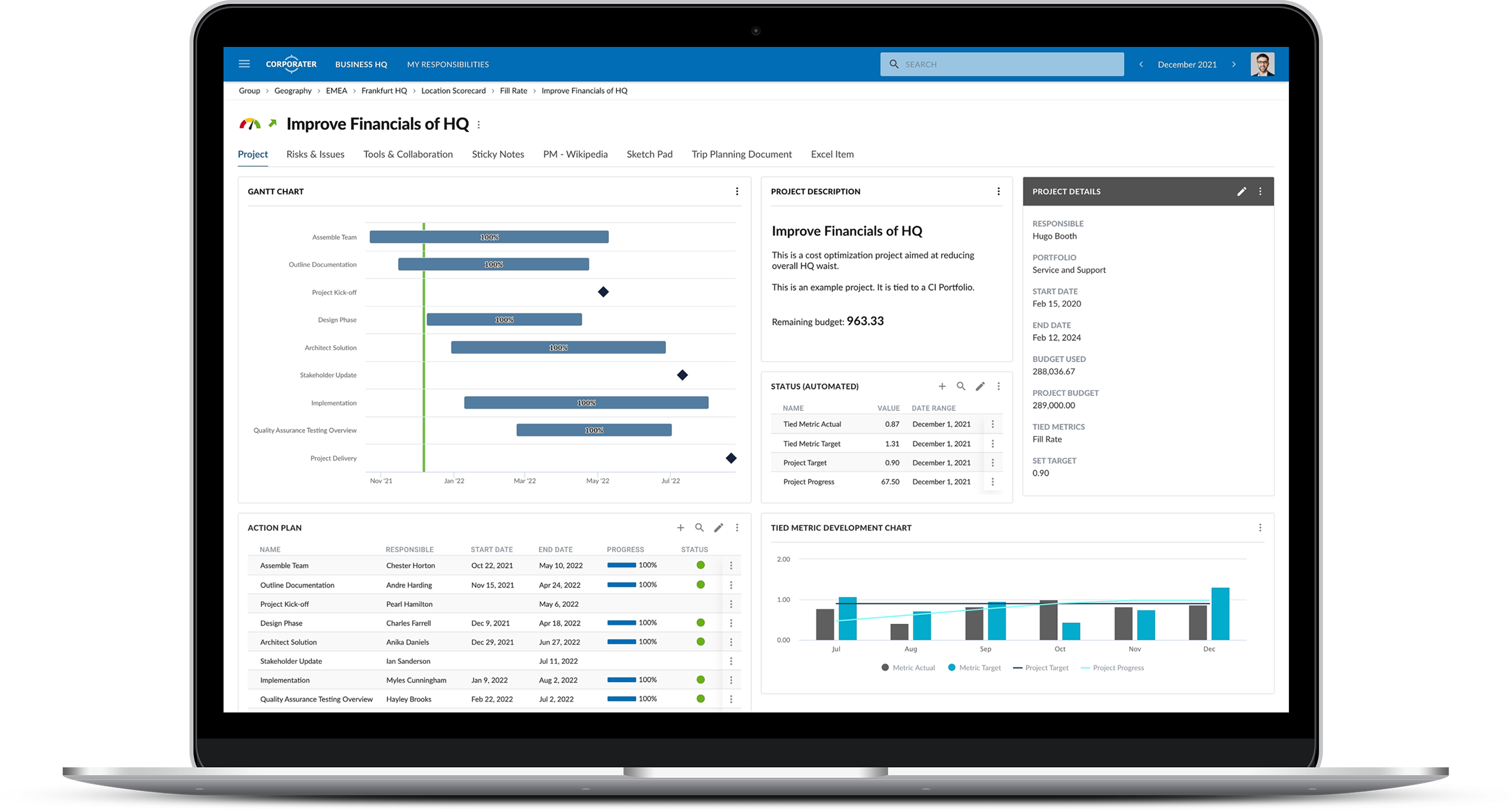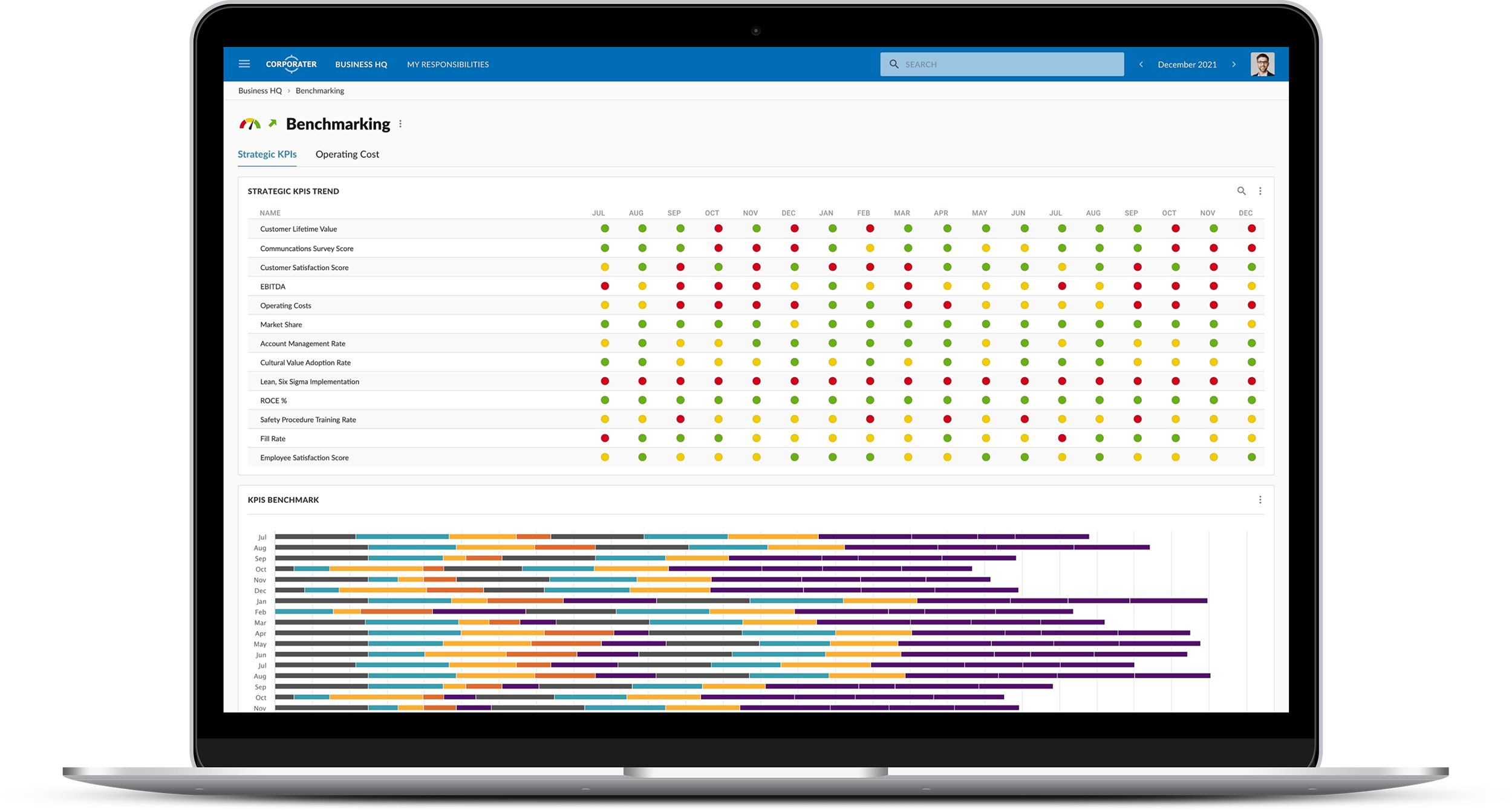As CEOs look to monitor business strategies, business operations and keep service-level targets in check, they need information and business dashboards that serve them in those endeavors. So, what’s really the secret behind the best corporate dashboards, the ones that power, organize and keep CEOs on track? The following are 5 must-have dashboards for CEOs. These combined will undoubtedly help CEOs take strategic decisions. Read on to see why.
1. Project Portfolio Dashboard

To reach your specified goals in your strategic plan, keeping track of all projects, initiatives and programs is not an easy task. This dashboard helps CEOs make informed strategic decisions which in turn help drive the momentum of the overall organizational success.
With Project Portfolio Dashboard, you can monitor and control multiple projects at once. The information displayed here is for all projects throughout the organization so all you need is one point of reference. With one quick glance, you easily garner a sense of overall success in the business.
Project Portfolio Dashboard aggregates information from the various projects, strategic initiatives and programs the company is undertaking. From here, you can drill a single project for more analysis and insights.
2. Corporate Strategy & Performance Dashboard

This dashboard helps keep your business moving in the right direction. As the scale of business changes over time, it can be difficult to lose a sense of how all the pieces function together. To stay on top of your vision and the strategy, this Corporate Strategy & Performance Dashboard will help you do that. By measuring and reporting on your strategic plan, CEOs can develop a critical framework that allows them to keep a pulse on the vitals of their company. If a deviation from the overarching strategy is found, CEOs are alerted, being given the opportunity to course-correct as needed.
Because these visionary strategies are usually large in scope, most taking three to five years to fulfill, a dashboard like this one ensures that your company doesn’t stray from its core beliefs and crafted vision. Every department within your company has its own unique objectives and initiatives that contribute to the overall company’s vision. It’s easy to lose track of what the various departments within your company are doing. By using the reports created by this dashboard, you can approach your managers and various departments when necessary, giving them the feedback they need to keep moving in the right direction.
Within this specific dashboard, look for functions that offer smart statistics around the overall performance of KPIs, initiatives, objectives, and departments, in addition, to drill down capabilities to ensure users can analyze underlying factors behind the performance.
3. Project Dashboard

Keep track of where you are at! This Project Dashboard allows managers to stay on top (and even ahead) of the game. This dashboard includes capabilities in keeping tabs on all the individual aspects of a certain project. View all the diagrams on a single page overview or click to get as specific as you would like, depending on what kind of information you need to gather.
Tracking issues, activities, milestones, risk, budget, status and progress all becomes much easier when this dashboard is at your fingertips.
As any CEO knows, project management is critical to the success of your company. By using Project Dashboard, you are able to organize yourself and your team so that you stay on top of the various moving pieces, making sure that you are never falling behind or shooting in the dark when it comes to projects.
4. Benchmarking Dashboard

A competitive environment naturally encourages and fosters improvement. Benchmarking Dashboard provides executives and managers with the tools they need that tally up performance indicators and places the information side by side with internal or external best practices.
Productivity skyrockets when people understand their potential and are encouraged to grow. Internal benchmarking can be across departments, regions, and affiliates, though external benchmarking is possible, too, with other companies, government entities, and statistics from international organizations. Options to include in the data are KPIs, objectives, initiatives, or any other element of performance that can be measured, tracked or tallied.
5. Operational Dashboard

You cannot manage your strategy without keeping an eye on operations. Operational Dashboards helps you stay in control of your business at all times. Have you been looking for a system that alerts you as soon as there are deviations in the data? Such a dashboard should include those properties. It also allows you to easily track your progress, fix any issues that may come up, and even discover untapped areas of potential. Operational Dashboards can be connected to multiples sources and the dashboard itself should be completely customizable so you can organize whatever key operational data you think is most necessary.
The smart data-driven alerts may be the best function with this dashboard because it means that no CEO will ever be caught off guard. With even the tiniest bit of foresight, sometimes the dips in productivity or profitability can be altered right away. With the intel and the swift nature of necessary adjustments, getting back on track has never looked easier. As CEO, you set the predefined thresholds and if the data override the threshold, you’re instantly alerted.
Conclusion
A business cannot succeed without strong leadership from its CEO. And a CEO can’t lead without having the information they need, to be organized and constantly updated. Such dashboards will give a 360 degrees insight of the business – starting at the company’s vision and strategy and reaching to the operational day-to-day activities. So, whether you’re looking for new tools to help with strategy, operations, or profitability, these dashboards will do the work for you, taking one less to-do off your plate.

